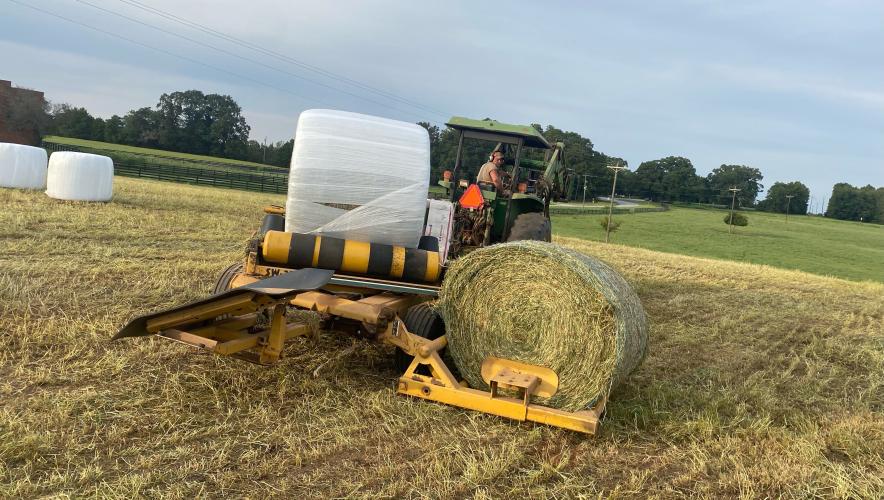Oglethorpe County’s unexpectedly wet hay season is coming to a close, bringing a bountiful harvest to farmers like Travis Legg.
“I’ve been doing this for a long time, and this is one of the wettest years I’ve seen,” said Legg, a third-generation farmer and owner of Windy Hill Ranch in Colbert.
Hay season hinges on a delicate balance between rainfall and sunshine. This season, which ran from May to September, saw a weekly average of 1.21 inches of rain. While excess rain fuels strong hay harvests, it also presents unique challenges.
Legg said farmers must ensure the moisture content of the hay drops to 20% before it is rolled, or they risk damaging the hay’s quality.
Hay farming is a cornerstone of Oglethorpe County’s economy.
According to The University of Georgia Center for Agribusiness and Economic Development’s 2021 Farm Gate Value Report, Oglethorpe County was the 10th largest producer of hay in the state.
The farm gate value, market value of a product minus its selling cost, of the hay was $5.04 million.
Hay’s bulk and weight make it difficult to transport, meaning it is typically sold locally. During wet seasons where an abundance of hay is produced, it is more difficult for sellers to find potential buyers for their expanded hay inventories.
“If I’ve got extra hay that I may not typically have, I mean, there’s just not that many people out there that need it because everybody’s got hay,” said Danny Sanders, the owner of Oglethorpe Feed and Hardware Supply.
Despite the oversupply issues farmers may face, hay plays a crucial role in feeding livestock through the winter. Many hay farmers grow hay with the sole intention of feeding their cattle through the colder seasons.
“It's basically our way of canning, like when we preserve our food as humans, it's basically our way of preserving food for livestock,” said Shanna Reynolds, the UGA county extension coordinator for Oglethorpe County.
This hay harvest is expected to last livestock through the winter. To keep the moisture content low, farmers try to find three- to four-day windows of sunshine to roll their hay bales. These windows, however, are rare, with Oglethorpe County only experiencing one since September began.
Sanders said he understands the volatility of the weather and the unique challenges it presents farmers.
“We can change the amount of fertilizer we put, and we can change the amount of acres we cut, but we don't have a whole lot of effect or influence on the amount of rain that we get,” Sanders said.
He urged Oglethorpe County residents to prioritize their hay bale storage.
Ideally, hay bales should be stored inside to protect them from moisture. If they are stored outside, they should be kept on high ground in areas that receive plenty of sunlight.
Despite the challenges that heavy rainfall has brought Oglethorpe County hay farmers, many are optimistic about the opportunities the large harvest brings the community.
“I’m doing more than I’ve ever done in my life,” Legg said. “We’ve had a record year on production.”

